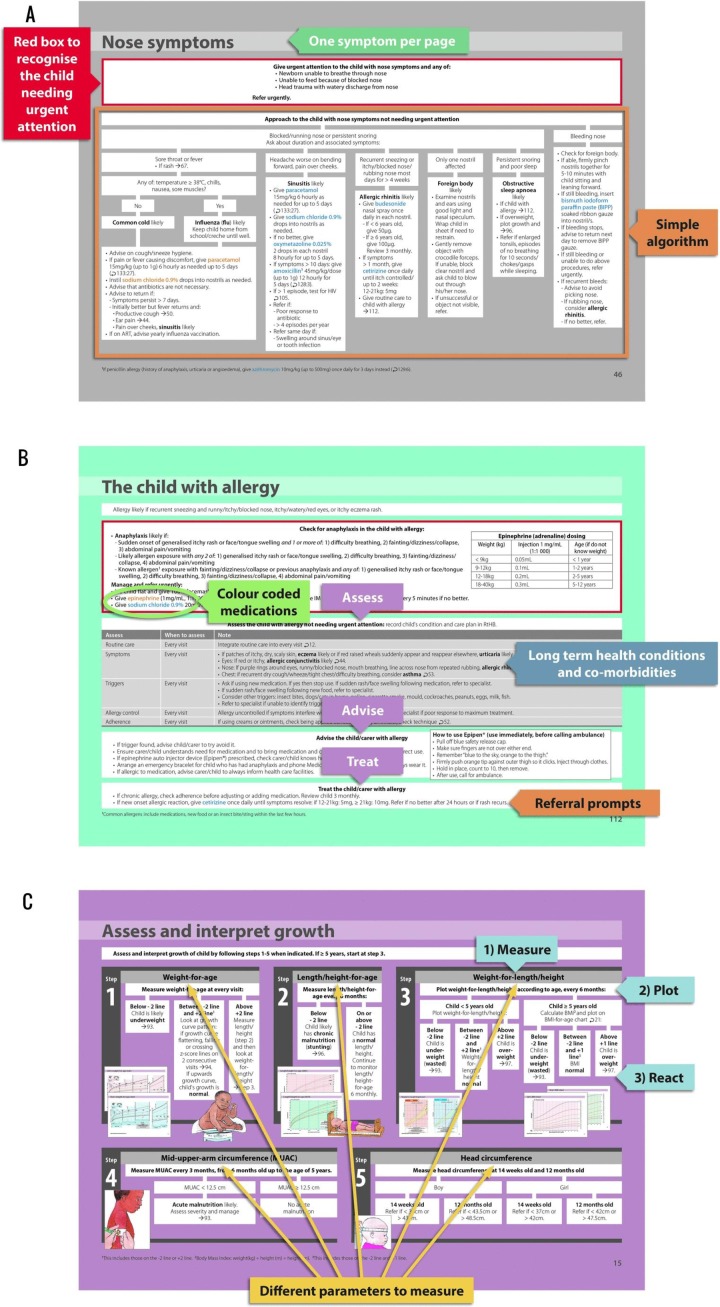Figure 2.
(A) Example of a symptom-based approach page. Each symptom is arranged on its own page with a ‘red box’ prefacing a simple algorithm. The ‘red box’ identifies and directs care for the child who needs urgent attention and referral to another level of care. For the child not requiring urgent attention, an algorithm directs the health worker to a likely diagnosis and provides primary care management as well as appropriate referral prompts where a condition is complex, there has been poor response to initial treatment or there is any doubt about a diagnosis. (B) Example of a standardised approach to routine care page. Structured approach to the routine care of a child with a long-term health condition: what to ‘assess’ and when, what to ‘advise’ the carer and child, and how to ‘treat’ the condition. The page also illustrates how PACK Child promotes the recognition of possible comorbid conditions. Three tones of grey in the ‘assess’ table delineate history, examination and investigations. (C) Routine care of the child is integrated into every visit. Growth is emphasised in the routine preventive care section with step-by-step, illustrated guidance on measuring, plotting, interpreting and reacting to growth parameters. ART, antiretroviral therapy.

